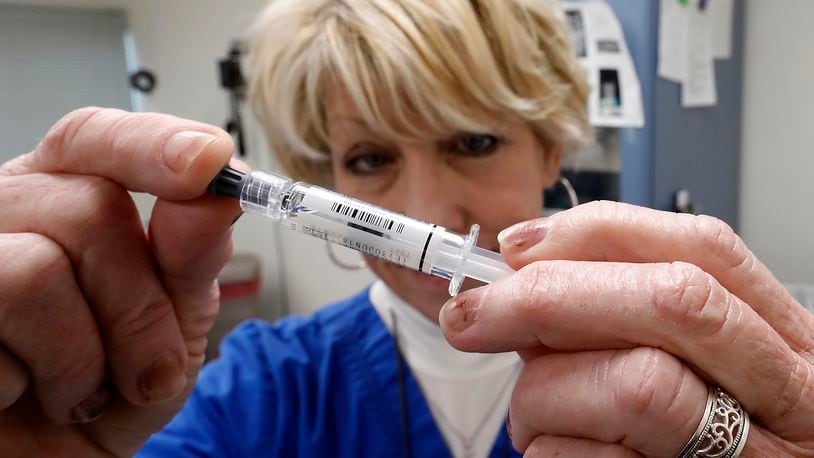MORE: Local counties see ‘dramatic rise’ in flu hospitalizations
MORE: Hospitals implement visitor restrictions for flu season
Ohio is now reporting 2,104 flu-associated hospitalizations for the 2017-18 flu season, compared to 369 at this same time last year, according to the department.
The state health department recommends everyone six months and older get a flu shot as soon as possible, as it takes about two weeks after vaccination for protection against the flu to set in. State officials said the flu vaccine is never 100 percent effective, and while some people who get vaccinated may still get the flu, their symptoms are likely to be less severe.
Hospitalization numbers are well above last year and above the five-year average. Last year, flu activity did not reach this level until mid-January. Hospitalizations due to the flu last year started to increase in December and peaked the last week of February.
To date, there have been no flu-associated pediatric deaths so far this flu season, according to the state health department. Adult flu-associated deaths are not required to be reported to public health agencies.
Dr. Michael Dohn, medical director for Public Health - Dayton & Montgomery County, told the Dayton Daily News this week the severity of local flu cases is tracked in a number of ways. It is tracked by emergency room visits, and thermometer sales at local drug stores is also tracked to gauge illness in the region.
Dohn encouraged people to wash their hands, cover your mouth when you cough, and to stay away from people when you are ill. He said it’s not too late to get the flu vaccine.
The Greater Dayton Area Hospital Association announced last week that adult, short-term acute care hospitals has implemented restrictions in an effort to minimize the spread of respiratory infections to hospital patients, employees and community members.
The policy is in place through March 2018. The policy includes: no visitation by anyone who is ill with any respiratory symptoms including coughing, fever, chills, headache, vomiting, sore throat and muscle aches or diarrhea.
Symptoms of influenza can include fever, cough, sore throat, body aches, headache, chills and fatigue. Although most people fully recover from the flu, some experience severe illness like pneumonia and respiratory failure, and the flu can sometimes be fatal.
MORE: Is the ‘man flu’ real?
Earlier this week, the Dayton Daily News reported that in the U.S last season, overall vaccine effectiveness against all circulating flu viruses was 39 percent, and effectiveness was only a bit lower — 32 percent — against H3N2 viruses. Vaccine effectiveness against other flu viruses (i.e., H1N1 or B viruses) was higher. This season’s flu vaccine includes the same H3N2 vaccine component as last season, and most circulating H3N2 viruses that have been tested in the U.S. this season are still similar to the H3N2 vaccine virus, according to the Centers for Disease Control.
About the Author
